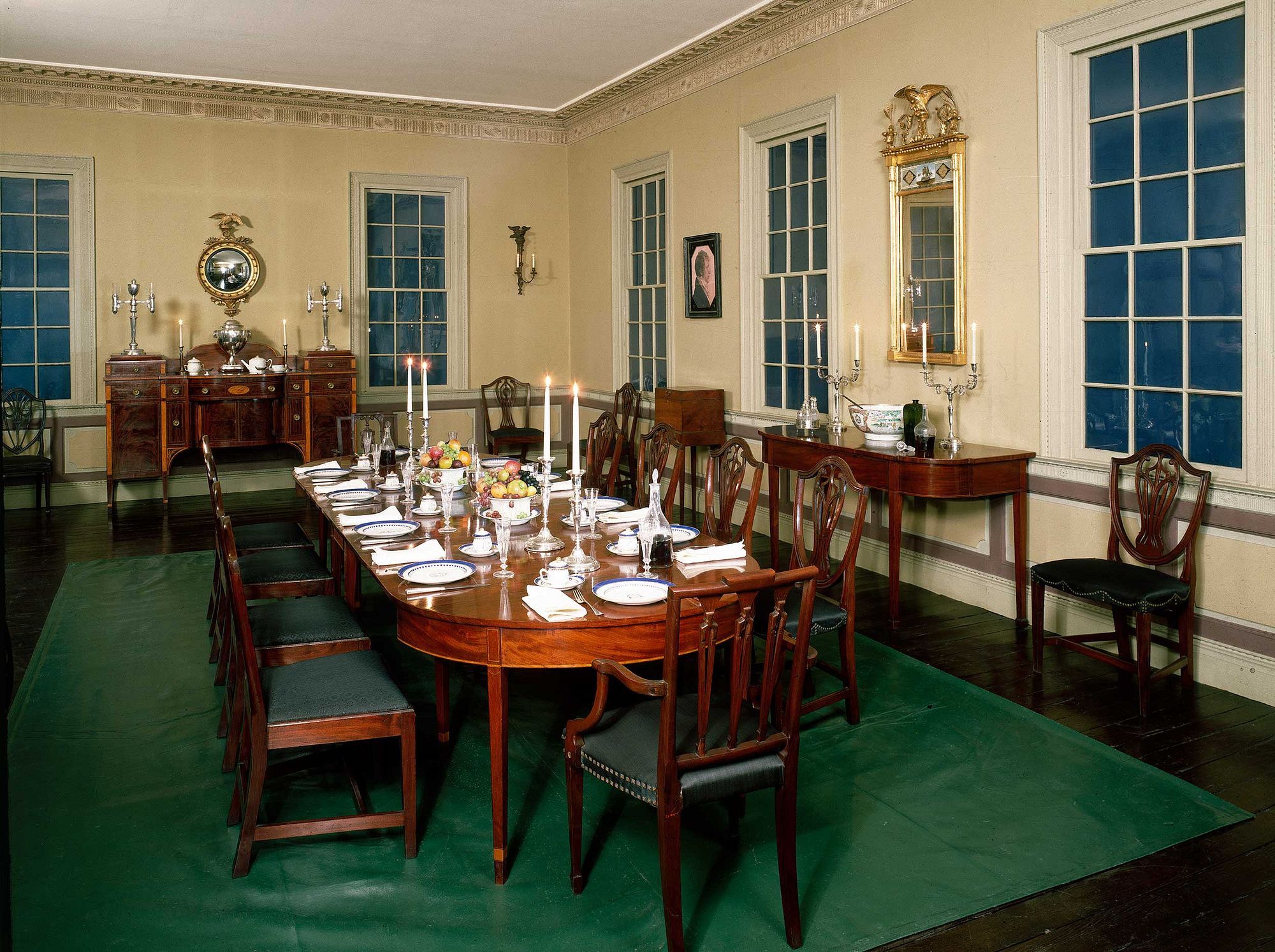
The Brooklyn Museum is auctioning off more than 200 furnishings and four historic period rooms, one of which is currently installed in the museum’s fourth-floor decorative arts and design galleries. The contents of the sale span from the 17th century to the 20th, and include goods from Europe, U.K. and the U.S.
Among the items going under the hammer are pieces donated by historically prominent figures like Luke Vincent Lockwood, a New York lawyer and American art expert, and Bernice Chrysler Garbisch, daughter of the founder of the Chrysler automotive empire and a major American folk art collector.
Four of the museum’s more than two dozen period rooms are also for sale, more specifically the furnishing and antiques from them, as well as woodwork and architectural elements. A dining room from the Federal-style Cane Acres Plantation, from South Carolina, is currently installed at the museum and bears a high estimate of $4,000. It is the museum’s largest period room and its first from the South.
Other rooms that have been in storage in a facility in New Jersey that are now on offer include: A Neoclassical parlor and dining room from the Abraham Harrison House in New Jersey, with a high estimate $3,000; the Gilded Age-era foyer from the McKim, Mead & White–designed Adams House, of New York, estimated to fetch up to $4,000; and elements from several rooms in the Greek Revival Matthew Clarkson Jr. House, in Brooklyn, with a high estimate of $3,000.
The sale takes place March 20 at Brunk Auctions in Asheville, North Carolina.
“We know [the period rooms] are much beloved,” said museum director Anne Pasternak in an email. “We have been studying them intensively over the past few years, with input from outside experts as well as our curators, and the truth is that some of them are of lesser quality, duplicate comparable works in the collection, and/or require extensive conservation to be on display.”
Writer Greg Allen broke the news of the sale, on a tip from ex-MoMA curator and dealer David Platzker. Allen notes that many of the rooms were acquired in a “period-room race” among museums in the early 20th century. “Unlike other period room collectors and institutions, such as the Met, the Philadelphia Museum, and Henry Francis du Pont, Brooklyn made a point of recreating the dimensions and orientation of the rooms they acquired, so this is a lot,” Allen said in his assessment of the sale.
The museum’s period rooms are closed to the public through June of this year, and the sale catalogue notes that the date of deinstallation is pending but likely to be in May or early summer.
The priciest items coming to auction, both bearing high estimates of $40,000, are a Virginia Queen Anne walnut dressing table and a Chippendale walnut cabinet. At the other end of the spectrum are items like a couple of “diminutive” Windsor armchairs, with a starting bid of $25. And it’s not all brown wood furniture: Items like a Le Corbusier LC4 pony hide, leather, and chrome lounge chair are also hitting the block (high estimate $2,000).
Pasternak declined to disclose how much the museum hopes to raise from the sale. Given the relatively low price points of the lots, its unlikely that the deaccessioning is intended to raise significant funds for the museum.
“Deaccessioning allows curators to refine and focus the collection, ensuring that we continue to display work that resonates and tells meaningful stories for our visitors,” said Pasternak. “Thus, we are very invested in making room for many of our great collections that have never had permanent gallery space in the Museum, such as Indigenous Arts, Contemporary, Arts of the Americas, and more. While it is always difficult to part with any work in our collection, the curators have been very careful to select objects that, while very good examples of their kind, will not diminish our collections by their absence.”
The museum has recently made headlines with splashy shows with pop culture crossover appeal, like the well-received current exhibition “Giants: Art from the Dean Collection of Swizz Beatz and Alicia Keys,” and last year’s widely panned “It’s Pablo-Matic,” guest-curated by the comedian Hannah Gadsby, who, in her 2018 Netflix special Nanette, called out artists like Pablo Picasso for their misogyny, and the art world for co-signing same.